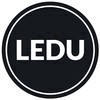
The education industry is just as important as healthcare, manufacturing or finance — and it has the same willingness to look to new technology for solutions. A number of schools and higher educational institutions are either already using or planning to implement blockchain platforms and tools (as new as they are) to improve different aspects of their systems.
While blockchain may be most well known as the technology that underpins Bitcoin and other cryptocurrencies, its uses range far beyond that — particularly in education — where it touches sectors like cloud storage, record management, tracking donations, and security for the verification of academic qualifications.
Distributed ledger technology (DLT) is still in its infancy, and its successful application by a few institutions could pave way for wider use cases in the future. How then can this technology be used to transform and improve education?
Verification of Degrees and Certificates
A person’s career prospects are much brighter if they have a certificate, diploma, or degree. Academic qualifications can also improve one’s social standing. But not all academic qualifications are obtained legally — there are people who are prepared to use fraudulently-obtained higher education qualifications in order to get ahead.
There are various kinds of academic fraud. Fake university degrees are common and can be acquired in several ways:
- A diploma that appears to have been issued by an accredited institution, yet it was issued illegally;
- A diploma issued by an accredited institution, but the grades are tampered with;
- Diplomas issued by fake universities (diploma mills).
The New York Times reported in 2015 that there was a growing tide of bogus degrees. The company behind one particular scam was based in Pakistani and had connections to more than 370 educational websites that claimed to have ties with schools and colleges in the United States.
To combat degree fraud, a number of universities and colleges are turning to blockchain use in education technology.
The University of Melbourne has issued student credentials on the blockchain because data stored on the blockchain cannot be tampered with. The Ministry of Education in Malaysia is also counting on the immutability of blockchain technology to maintain the integrity of degrees issued by the country’s universities.
Due to the nature of the new technology, degrees issued on a distributed ledger are tamper-proof, and the chances of fake academic credentials being recorded are minimized. However, this does not completely solve the problem, as university officials with access to the blockchain for academic record-keeping can still fraudulently enter fake degrees — there is still room for human error.
Cloud Storage
Education systems store vast amounts of student records and data such as grades, degrees, payment information, identity, and curricula. Storing this information on hard drives or servers creates an issue of centralization, a weak point for the security of the entire system. In the future, institutions could store student information on blockchains to improve security by removing the need for one centralized database.
Innovative Learning Platforms
Blockchain technology has also brought on the creation of innovative educational technology platforms that connect educators with learners. One such platform is Education Ecosystem, a project-based platform that teaches students and professional developers how to build practical projects. The projects are created by experienced developers to benefit viewers, who gain valuable learning experiences in putting their theoretical knowledge into practice. There are other edtech platforms such as Blockchain Education Network that are utilizing blockchain in the education sector.
Tracking Donations
Some donors are reluctant to give to worthy causes due to trust issues. About one in three people in America are skeptical about how charity groups use their funds, according to one study.
This means that charitable organizations could be more likely to receive increased donations if they become more transparent. The same can be said about the education sector. Colleges received record donations in 2018, but the overall number of individual donors declined.
Blockchain technology can be leveraged to track donations and increase the transparency of donations given to educational institutions. Donors often do not know how their donations are (mis)used, and they would like to know if their funds reach the intended beneficiaries.
The blockchain records and secures all the transactions while eliminating the need for third-party intermediaries. Through blockchain, donors have an easy way to track their donations.
A number of projects have been created to use the distributed ledger technology to increase trust levels between donors and charity organizations: for example, social initiative Luxarity partnered with blockchain firm Consensys to use blockchain to track donations this January.
Conclusion
Blockchain in education is now more important than ever as education moves offline due to quarantine restrictions caused by the coronavirus. The technology is still in its infancy and further research is needed to find its true potential in education and other sectors. While the use of blockchain in education is currently limited, every journey begins with a first step.
